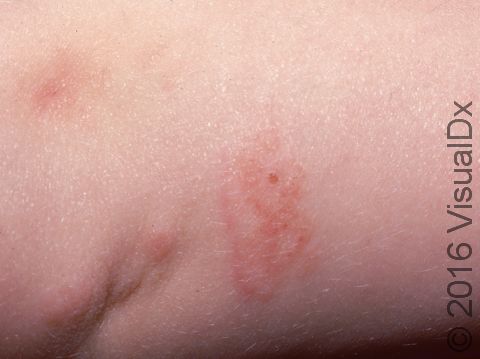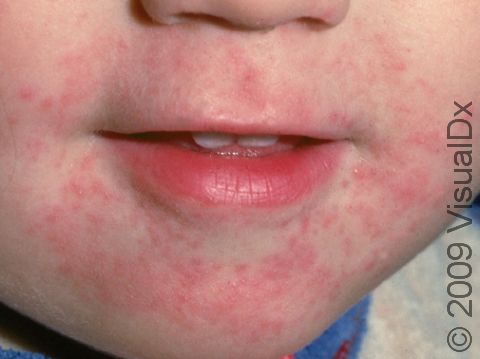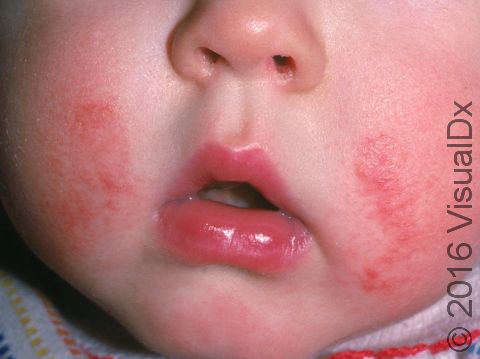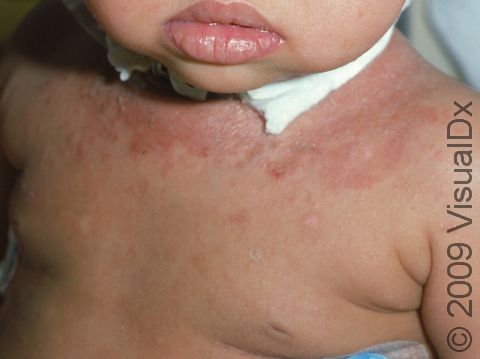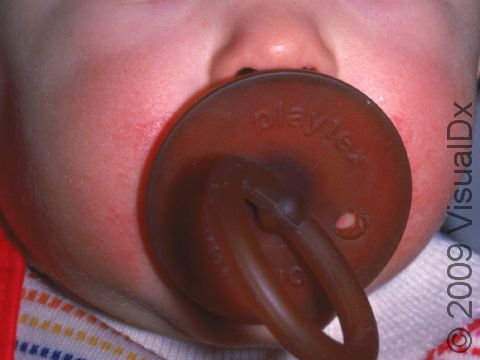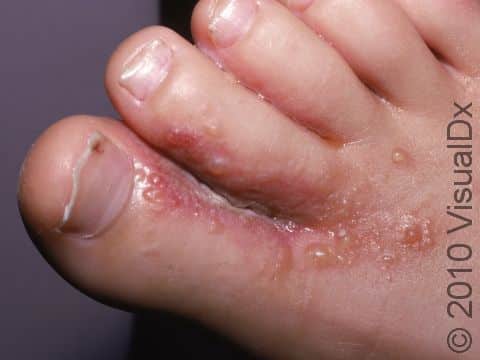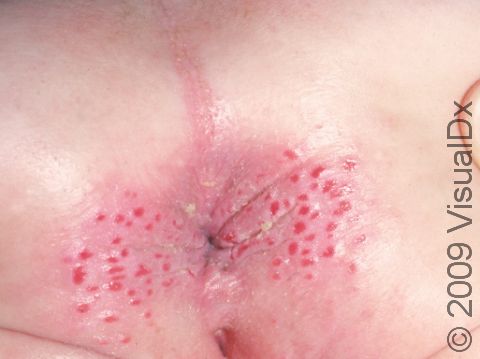Irritant Contact Dermatitis
Dermatitis, in general, refers to an inflammation of the skin. Irritant contact dermatitis, specifically, is an inflammation of the skin caused by contact with a foreign substance. This can be any chemical substance, including soaps, detergents, and fabric softeners. The reaction can look like a burn.
Infants experiencing irritant contact dermatitis will usually be fussy. There may be obvious skin irritation, including inflammation, swelling of the area, and warmth. The rash will be confined to the specific area that came into contact with the offending agent. The onset of the skin reaction in irritant contact dermatitis is immediate, as opposed to allergic contact dermatitis, where there is a delayed reaction in which the offending substance causes production of antibodies that cause the rash to develop.
Who's At Risk?
The most common irritant contact dermatitis in infants is diaper rash (diaper dermatitis). In this case, there is a skin reaction in the diaper area caused by prolonged contact with the natural chemicals found in urine and stool.
Other irritant contact dermatitis in an infant may be found around the mouth, due to skin contact with baby food or drooling.
Signs & Symptoms
The most common location for irritant contact dermatitis is the hands, although any body surface can be affected, including the genitals.
They may appear as pink-to-red lesions. Sheets of skin (plaques) develop surface hardening (scale) and cracking (fissuring) in areas of long-term (chronic) exposure. If the lesions appear quickly (acutely), patches of affected skin may have a sharp border at the exposed areas. On the fingertips, you might see peeling of the skin, cracks, and scaling.
Self-Care Guidelines
- Remove whatever chemical or condition is causing the irritation, and protect the skin from further exposure.
- For irritated skin in body folds, try using a barrier cream with zinc oxide paste, such as Desitin®.
- If the area is dry and cracked, moisturize the area frequently by dampening with water and then applying a softening cream (emollient) such as petroleum jelly or a moisturizer.
- For itchy, red areas, try applying over-the-counter hydrocortisone cream (0.5–1%) twice daily.
Treatments
- The doctor may recommend applying petroleum jelly (Vaseline®) or a thick moisturizing cream directly to your child’s wet skin after bathing.
- Apply these creams frequently (at least twice daily) to moisturize and protect the skin.
- The doctor may prescribe mild- to moderate-potency topical steroids if inflammation is present.
Visit Urgency
See your child’s doctor or a dermatologist if the rash does not go away with self-care measures.
References
Bolognia, Jean L., ed. Dermatology, pp.227, 241-249. New York: Mosby, 2003.
Freedberg, Irwin M., ed. Fitzpatrick’s Dermatology in General Medicine. 6th ed, pp.1309-1314, 2370. New York: McGraw-Hill, 2003.
Last modified on August 16th, 2022 at 2:45 pm

Not sure what to look for?
Try our new Rash and Skin Condition Finder
